31 September – 12 November 2021
Glasgow, UK
Website: https://bit.ly/3lWSEyK
31 September – 12 November 2021
Glasgow, UK
Website: https://bit.ly/3lWSEyK
16 September 2021
Web Streamed
Website: https://bit.ly/2U73O8T
8th EFMC Young Medicinal Chemists’ Symposium
9 – 10 September 2021
Online
Website: https://bit.ly/3yZJO7Q
Organised by the international Union of Pure and Applied Chemistry (IUPAC)
17 – 18 August 2021
Online
Website: https://bit.ly/3izGk5N
16 September 2021
Online
Registration link: https://bit.ly/2VFvQsN
8 – 10 September 2021
Online
Website: https://bit.ly/3lPMksU
GDCh Science Forum Chemistry 2021
29 August – 1 September 2021
Online
Website: https://bit.ly/2Tt0Afu
23 August 2021
Online satellite meeting of the 18th European Conference on Solid State Chemistry – ECSSC2021
Website: https://bit.ly/3ywQJVc
The 2021 Nominations for the OPWC – The Hague Award is open until 1 October 2021.
You can find out more about it here.
This award is put forward by the Organisation for the Prohibition of Chemical Weapons (OPCW) – in collaboration with the Municipality of The Hague (The Netherlands) – and recognises individuals and institutions that have made an outstanding contribution towards the goal of a world permanently free of chemical weapons.
Currently, 17 calls for submissions in the framework of the Euratom Research and Training Programme (2021-2025) are open until 7 October 2021.
You can have a look at them here.
The Euratom Research and Training Programme (2021-2025) is a complementary funding programme to Horizon Europe which covers nuclear research and innovation – with an emphasis on the continuous improvement of nuclear safety, security, and radiation protection.
Research activities can be undertaken by the Commission’s Joint Research Centre or by multi-partner consortia. It will also support the mobility of researchers in the nuclear field in the framework of Horizon Europe’s Marie Skłodowska-Curie Actions (MSCA).
The same rules for participation as Horizon Europe are used.
More information about the Euratom Research and Training Programme (2021-2025) is available on the European Commission website.
Currently, two European Research Council (ERC) calls are open:
The call for the ERC Synergy Grants is scheduled to open for submission of proposals in the second half of August 2021. Researchers who would like to compete for an ERC Synergy Grant have until 10 November 2021 to apply for the next round of funding.
Four Marie Skłodowska-Curie Actions (MSCA) calls for funding are open:
You are invited to take a look at them here.
The following four (4) calls for nominations will open in September 2021:
A number of consultations put forward by the European Food Safety Authority (EFSA) are currently open.
You can take a look at all here.
EuChemS is an official accredited stakeholder of the European Food Safety Authority (EFSA).
A number of consultations put forward by the European Chemicals Agency (ECHA) are currently open.
You can take a look at them here.
EuChemS is an official accredited stakeholder of the European Chemicals Agency (ECHA).
A number of consultations and roadmaps put forward by the European Commission are currently open:
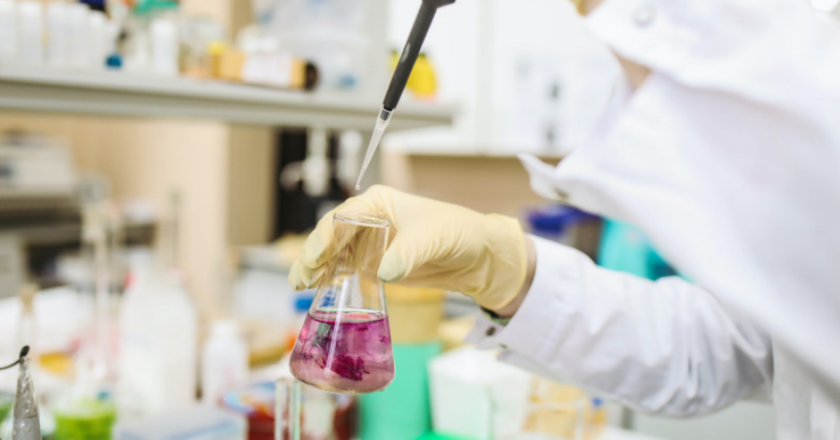
On 8 July 2021, ECHA integrated 8 new chemical substances to its Candidate List. The list contains substances of high concern that may harm humans or the environment, which now includes a total of 219 different substances. They are classified according to the REACH regulation.
The newly added substances are:
Since 8 July 2021, Importers and manufacturers using these substances have 6 months to inform ECHA about it. For safe use, consumers shall be notified when each of these substances exceeds a concentration of 0.1% in consumer products.
More information on the updated Candidate List can be found here.
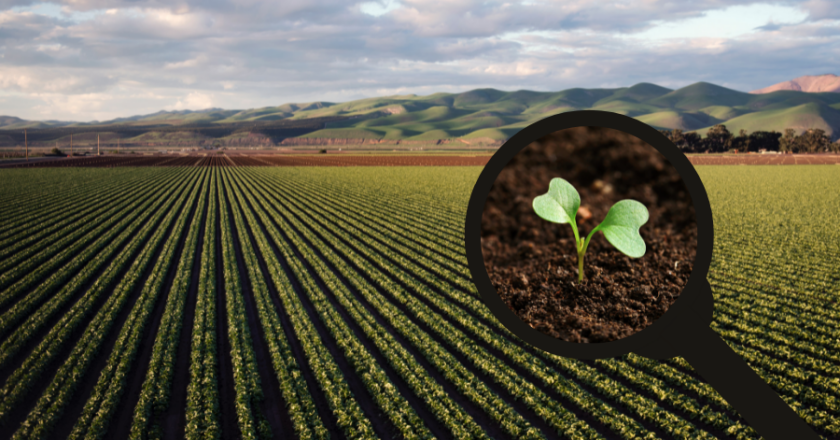
On 5 July 2021, the EU Code of Conduct on Responsible Food Business and Marketing Practices was officially launched by the European Commission, together with relevant stakeholders. The Code is part of the Farm to Fork Strategy (F2F) action plan and targets responsible food businesses and marketing practices.
The EU Code of Conduct consists of 7 aspirational objectives, aiming for more sustainable and healthy food choices:
Every company (regardless of size) involved in food activities or related to food processes can join the EU Code of Conduct. Stakeholders wishing to sign the Code are requested to commit to it over the long-term (at least until 2025) and to provide an annual report in April. Commitment information will be made available to the public and each stakeholder will present its progress at least once a year on a specific and dedicated platform.
In total, 65 signatories (26 food manufacturers, 14 food retailers, 1 from food service sector and 24 associations) attended the High-level stakeholder celebratory event marking the launch of the Code of Conduct in July.
“The EU Code of Conduct on responsible food business and marketing practices is a considerable step forward made by the agri-food ecosystem. Every voluntary commitment counts to achieve the sustainable transition of our food systems, while increasing their resilience. The Commission is committed to mobilising its support instruments, in particular for SMEs, the backbone of the agri-food ecosystem, as we are embarking on this ambitious journey.”
– Thierry Breton
Commissioner for the Internal Market
Source: https://bit.ly/3yocZAL
You can find more information about the EU Code of Conduct here.

The recent publication of most of Horizon Europe’s work programmes has provided insights on European priorities over the 7 coming years. Amongst them, ensuring a fair and equal digital transition is particularly critical.
In response to the low proportion of women-founded innovative start-ups in the EU (15%) and the even lower 2% of all-female teams being granted venture capital money, Horizon Europe’s European Innovation Ecosystems 2021-2022 work programme gives emphasis to gender equality within the digital sector with its 2021 Women-TechEU call.
A call for mentors in leadership positions (investors, researchers and tech experts) was launched under the EIC’s Women Leadership Programme. Introduced at the time of the European Research and Innovation Days (23-24 June), the call will close 10 November 2021.
Enshrined under the SCALEUP – Elevating the scalability potential of European Business destination, WomenTechEU action will be supported by the European Innovation Council’s Accelerator & Pathfinder with a €2 million contribution.
The initiative’s €3.75 million total indicative budget is to be distributed as €75,000 individual grants to support early-stage business development and targets women founders, co-founders or holding a high management position in deep tech start-ups around Europe and associated countries.
The early-stage focus brings novelty with respect to the EIC’s main Accelerator programme – which also supports women-led start-ups development in general – and is expected to generate talent attraction for a greater emergence of women-founded companies in the future.
Women-TechEU also includes assistance in networking and mentoring activities which will be provided by the EIC Business Acceleration Services (BAS) to increase women’s visibility and funding opportunities.
Find out more about Women-TechEU here.
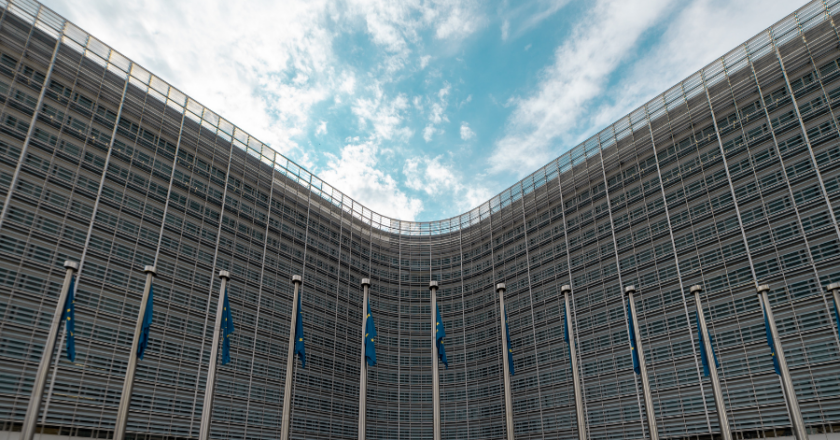
As the EU is stepping into its new MFF term, the 2030 deadline is getting closer. With this in mind, the European Commission recently (mid-July) presented a myriad of new measures along with law revisions gathered under its newest Fit for 55 package. The initiative is expected to provide the EU with tools to meet the Green Deal’s objectives, comply with the European Climate Law and keep its Paris Agreement commitments.
The scheme’s “55” stands for the EU’s 55% reduction target for greenhouse gas emission to be met by 2030, which had been communicated to the United Nations Framework Convention on Climate Change in December 2020 under Germany’s presidency.
The Fit for 55 Package will constitute a main priority on the Slovenian presidency agenda which will strive to foster flexibility for all EU countries to reach the initiative’s goals while meeting its deadlines.
Continuing its efforts on emission reduction since it was launched in 2005, the EU Emission Trading System is to be revised together with the Effort Sharing Regulation with lower carbon emission limits and higher annual reduction targets. The two policies will continue working hand in hand putting a price on the carbon tonne and respectively covering 40% (power sector, manufacturing industry) and 60% (transport, agriculture) of the total current greenhouse gases emissions.
Revisions on the strongly related Renewable Energy Directive and Energy Efficiency Directive are setting a 40% target for sustainably produced energy by 2030. Combined, the two legislations are expected to increase clean energy production while reducing our overall energy consumption (green or not).
Adjustments on the Alternative Fuels Infrastructure Directive will back this effort with the implementation of more convenient refuelling and recharging devices for clean transports (e.g. hydrogen trucks) and electric cars. The Directive will be complemented by two newly introduced initiatives: ReFuelEU Aviation and FuelEU Maritime which will strive to boost the use of sustainable fuel alternatives and zero emissions technology in both transport sectors. Both programmes introduce gradually increasing percentages of green fuels within blending mandates (up to 60% of Sustainable Aviation Fuels-SAF by 2050) and incentives towards various cleaner alternatives.
Lastly, a new Social Climate Fund will support EU citizens with green transition-related costs. The expected €72.2 billion budget for the 2025-2032 period will endeavour to align the green transition process with NextGenEU and Resilience and Recovery Facility objectives.

Another main measure among the brand new ones is the Carbon Border Adjustment Mechanism which is to be implemented by 2023 and is meant to protect European firms from environmental dumping while preventing “carbon leakage”.
Further discussions on the upcoming COP26 in November are expected to clarify the situation.
Read more on the various Fit for 55 measures here.
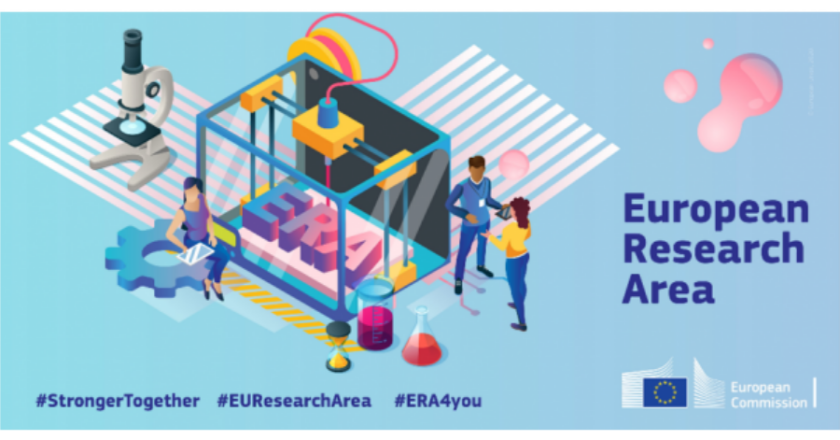
On 16 July, the European Commission adopted its proposal for a Council recommendation on “a Pact for Research and Innovation in Europe”. This policy action is dedicated to boosting the implementation of the European Research Area (ERA), which aims to create a single EU-wide market for research and innovation.
The Pact is a long-term plan, with similar goals as the ones for ERA when it was implemented in 2000, but adapted to current challenges (e.g., the COVID-19 pandemic). First recommendations were made to the EU Member States to encourage them to agree on common directives and guidelines for research and innovation at the EU level. Scientists must work in a safe and healthy environment within the EU, which includes gender equality, freedom of scientific research, and ethics. ERA could achieve these goals by bringing more cooperation at the national and European level, with efficient and inclusive working methods.
Furthermore, the Pact will enable each EU Member State to establish an internal market of knowledge within ERA’s action plan. A global engagement through incentives will be implemented and researchers will be at the core of the programme. The reward system will be put in place, similar to the one for the Marie Skłodowska-Curie Actions (ensuring consistency with a well-established and attractive work project). To achieve this, ERA will be fully re-shaped through special tools: a specific policy agenda (clear and actionable targets with direct follow-up implementations), an online policy platform (for reporting the implementations and investments), a scoreboard (monitoring ERA’s objectives with indicators and qualitative analyses) and regular policy dialogues between EU Member States and the European Commission.
“The Pact for Research and Innovation is the first milestone in our ambition for a simplified and more efficient European Research Area. The objective of the Pact is to foster the future dialogue process with key actors putting a clear emphasis on sharing best practices and facilitating the collaboration of Member States to invest in and coordinate on common research and innovation objectives.”
– Mariya Gabriel,
Commissioner for Innovation, Research, Culture, Education and Youth
Source: https://bit.ly/3Aq3kKj
Finally, the Pact will strive to reinforce the role and the legitimacy of ERA with a common approach of the Member States through investing 3% of their GDP in research and innovation by 2030 (1.25% of the EU GDP). Member States lagging behind the EU’s average GDP dedicated to research and innovation should increase their expenses by at least 50% in 5 years.
You can read the full proposal here.
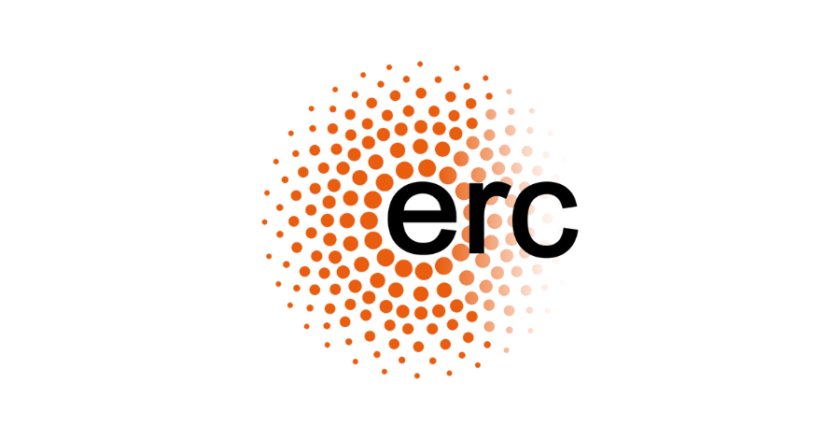
Mid-July has seen the adoption of the European Research Centre 2022 work programme under Horizon Europe. Its €2.4 billion annual budget accounts for 15% of its €16 billion total 2021-2027 allocated funds. It represents a €0.5 billion increase compared to its 2021 budget and a €0.2 billion rise from its 2020 budget under Horizon 2020. Its overall HE budget is €3.5 billion higher than its H2020 budget, but its share has decreased as the programme’s overall budget has risen (18% for H2020, 17% of HE).
Besides ERC’s usual Starting, Consolidator and Advanced Grants, the work programme will be bringing back the Synergy and Proof of Concept Grants which are not featured amongst its 2021 calls. The two latter calls will allow for intensified interdisciplinary research and expanded international cooperation. Both Synergy and Proof of Concept calls will open on 15 July 2021 with respectively €300 million and €25 million budgets. A second Proof of Concept call is to be launched on 16 November 2021 and will be allocating the second half of its total €50 million dedicated fund.
In terms of priorities, ERC’s 2022 work programme will be fostering its biggest annual budget ever to generate the creation of “Some 8,000 jobs for post-doctoral fellow, PhD students and other research staff [from across the EU and associated countries, regardless of their nationality] in ERC grantees’ teams.”
It will put emphasis on pressing societal matters with initiatives such as the enforcement of the Gender Equality Plan requirement, which applicants must have finalised by the time the grant agreement is to be signed and which covers the whole project duration.
Its Public Engagement with Research Award will also strive to deliver on Horizon Europe’s key focus on citizen’s involvement by incentivising the building of projects with a wider audience outreach.
Find out more about the ERC 2022 work programme and its calls calendar here.
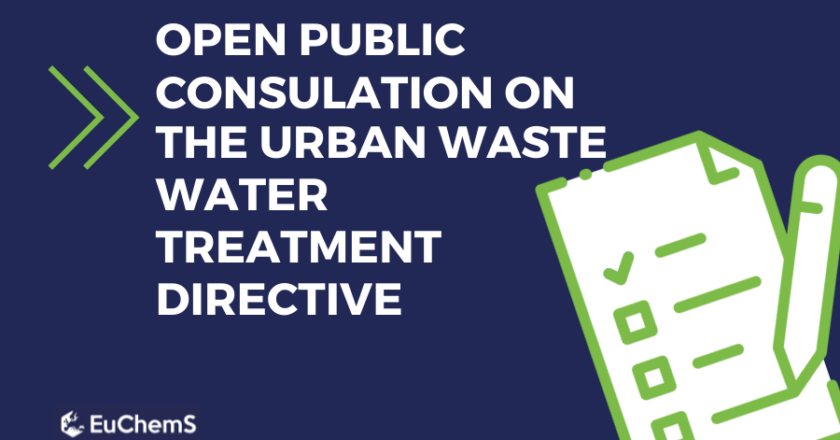
The European Chemical Society (EuChemS) has recently responded to the public consultation on the Urban Waste Water Treatment Directive (UWWTD) launched by the European Commission.
The UWWTD is part of the EU water policy and aims at ensuring that urban wastewater is clean and safe for protecting public health and the environment. Commission adoption is scheduled during the first quarter of 2022.
In its reply, EuChemS identified challenges and needs to address, such as storm water overflows, micropollutants, industrial discharges, etc. You can read EuChemS’ full response here.

On 14 – 15 September, the Spanish Royal Society of Chemistry (RSEQ) is organising the ceremony for the unveiling of the EuChemS Historical Landmark plaque for the Almadén mines, which has been awarded at the European level for its 2019 edition EuChemS Historical Landmarks Award (European level) in recognition of the role it played in the history of chemistry and the European sense of belonging between people and ideas.
This ceremony will be preceded by a symposium on the history of the mines and the mercury element – the greatest volume of mercury production in history has been achieved in these mines.
You can read more about the upcoming celebration here (in the Spanish language).
Follow EuChemS on social networks to not miss out on the ceremony!
![]()
![]()
![]()
![]()
Four (4) calls for nominations will open in September 2021:
From 29 August to 1 September, EuChemS will join the next GDCh Science Forum Chemistry (WiFo) as a classic partner. For 4 days, registrants will be able to interact with the EuChemS team through its interactive virtual booth.
This year’s event will be held online. You can discover more about it and register here.
The EuChemS Division of Analytical Chemistry (DAC) is organising the ‘2021 DAC-EuChemS Lectures Awardees’ webinar which will be held on Thursday 16 September 2021, from 11:00 to 13:30 CEST.
You can click here to discover more about the programme for this online event.
You must be logged in to post a comment.